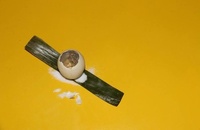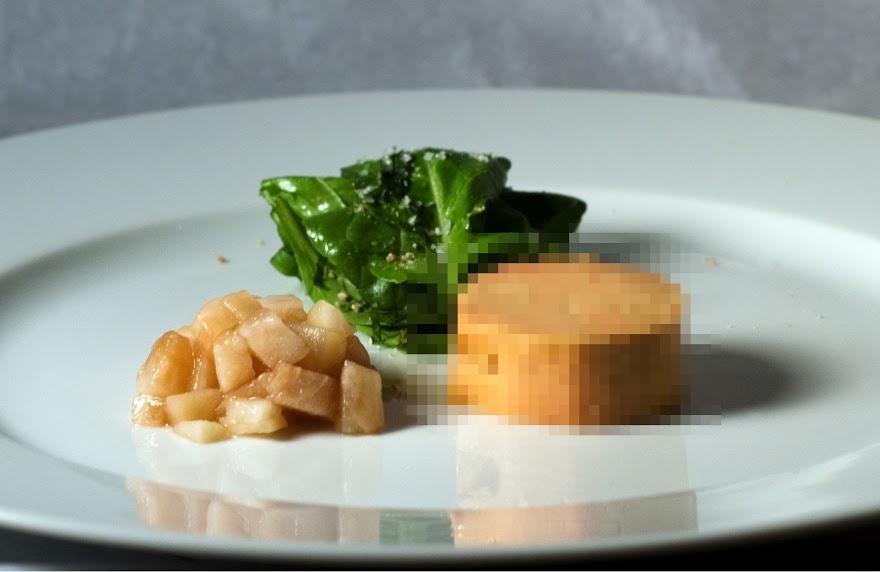
Certain foods—red velvet cake, rich brownies, and gooey pizzas—taste deliciously sinful. But while those dishes might leave you wanting to visit a confessional (or at least eat a salad for breakfast), others could actually get you in trouble with the law. What makes an illegal food? Sometimes it’s the toxicity of the ingredients; other times it’s a controversial method of preparation. Here’s a list of eight illegal foods that you should avoid if you want to keep your record clean.
Kinder Surprise Eggs
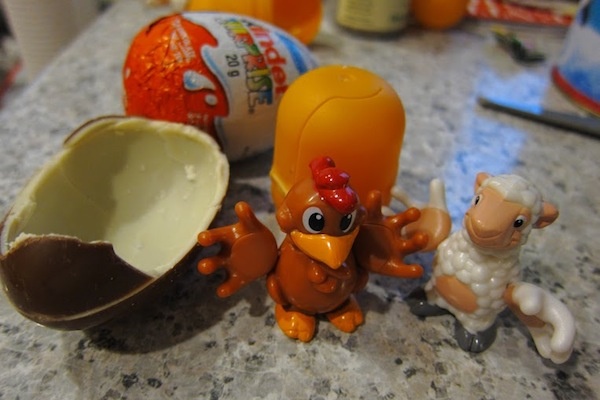
What is it? Kids adore these chocolate eggs, which are primarily sold in Europe, because there’s a toy hidden inside. What’s more, they’re available year-round, not just at Easter.
Why is it illegal? Because of safety concerns, the US has banned any food that has something inedible embedded within it. And don’t try bringing a Kinder Egg home from your next trip overseas—if customs catches you with these in your bag, they’ll be confiscated.

Ackee

What is it? The national fruit of Jamaica.
How is it prepared? It’s traditionally boiled and sautéed with salted cod, onions, and hot peppers.
Why is it illegal? Like fugu, this fruit is fatal if isn’t prepped correctly. An underripe ackee can cause coma or death. And even when it is ripe, one must be careful to only eat the yellow parts—definitely not the seeds—or risk what’s known as Jamaican vomiting sickness. While fresh ackee is banned in the US, canned or frozen ackee is acceptable as it’s usually toxin-free.
Absinthe

What is it? A potent spirit made from wormwood, much beloved by artists and adventurers alike for its supposedly hallucinogenic qualities.
How is it prepared? Historically, absinthe was poured into a tiny glass that has a slotted spoon and a sugar cube balanced on top. The sugar cube is lit on fire until it melts into the spirit, giving it that opaque green glow.
Why is it illegal? The psychoactive nature of the spirit has been debunked, but full Euro-strength absinthe is still unavailable in the US. The American version must have little to no thujone—the “trippy” compound found in wormwood that was said to cause the hallucinations.
Haggis

What is it? A savory organ pudding and the ultimate Scottish comfort food.
How is it prepared? Sheep heart, liver, and lungs are minced with spices, then encased in a sheep stomach and boiled. It’s typically served with mashed potatoes and rutabaga.
Why is it illegal? Since 1971, the US has banned food containing the lung of any animal due to sanitary issues; any American-made haggis omits the lung.
Fugu
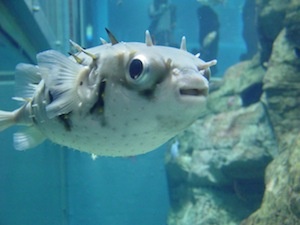
What is it? The Japanese pufferfish.
How is it prepared? Carefully. The flesh of this delicate fish is extremely light and porous and usually sliced ultra-thin.
Why is it illegal? Preparation of fugu without proper certification in almost any country, including Japan and the US, is illegal. One false move, and chefs could be serving their customers poison instead of a delicacy. Five people die per year from eating improperly cooked fugu, and the death isn’t pretty: paralysis comes on slowly, starting in the lips and fingers and spreading through the entire body, including the respiratory system, while the mind remains conscious the whole time.
Foie Gras
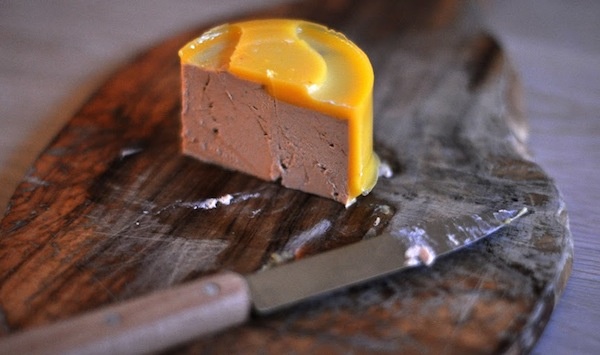
What is it? A spread made from duck or goose liver.
How is it prepared? A classic French dish that can also be turned into a mousse or pâté, it’s often served as a spread with bread or alongside another food item, such as steak.
Why is it illegal? The controversy stems from the way the bird is force-fed corn to fatten it up and give its liver that signature rich, buttery flavor. Once illegal in Chicago, its legality in California is still up in the air, with an overturned ban being appealed by the state.
Shark-Fin Soup
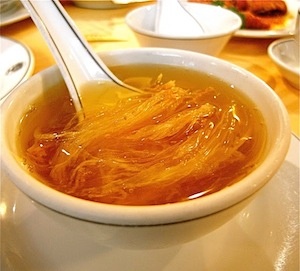
What is it? This Chinese soup is made with real shark fins. Considered a delicacy by both commoners and royalty, it dates all the way back to the Ming dynasty. Some variations, such as Buddha Jumps Over the Wall, also incorporate sea cucumbers, quail eggs, and other ingredients.
How is it prepared? The shark fins are trimmed, then boiled with stock and seasonings.
Why is it illegal? Unscrupulous fishermen remove the shark’s fin and throw the animal back into the ocean to die. Because this practice is considered inhumane and has contributed to the diminishing numbers of sharks, shark fins are banned in eight states, including California.
Ortolan

What is it? The ortolan bunting is a tiny, palm-sized songbird found in the warmer regions of Europe.
How is it prepared? Chefs marinate the bird in Armagnac, a French brandy, before roasting them. Then the bird is eaten whole, feet first. The dish is highly coveted, and Anthony Bourdain describes trying it in his book Medium Raw with equal parts gore and reverie: “With every bite, as the thin bones and layers of fat, meat, skin, and organs compact in on themselves, there are sublime dribbles of varied and wondrous ancient flavors: figs, Armagnac, dark flesh slightly infused with the salty taste of my own blood.”
Why is it illegal? Once an ortolan is caught, the next step is to fatten it up. To trick it into thinking it’s nighttime (when ortolans eat), the chef keeps it in a black box, then force-feeds it to engorgement. And that’s not even the worst part: the bird is still breathing when it’s plunged into the Armagnac marinade. Traditionally, diners wear a napkin over their heads when they eat this dish, possibly in an effort to hide their sin from God. Couple this grisly practice with the ortolan’s “rare species” status, and it’s no wonder that France has made it illegal to serve the bird since 1999.

Photos: Poached Moulard Duck Foie Gras Au Torchon with Pickled Pear by Luigi Anzivino under CC BY-NC-SA 2.0; Ortolan Bunting; Emberiza hortulana by Vitalii Khustochka under CC BY 2.0; Forbidden herbs by Peter Thoeny under CC BY-NC-SA 2.0; Pufferfish by Aaron under CC BY-NC-SA 2.0; Haggis and a Caledonian Great Scott IMG_1488 by Carol under CC BY-NC-SA 2.0; Kinder Surprise Eggs by y6y6y6 under CC BY 2.0; Ackees by kaiton under CC BY-SA 2.0; shark-fin soup by Harmon under CC BY-SA 2.0;
Foie gras by cyclonebill under CC BY-SA 2.0
Check out these other unusual (but not illicit) dishes from around the world:
